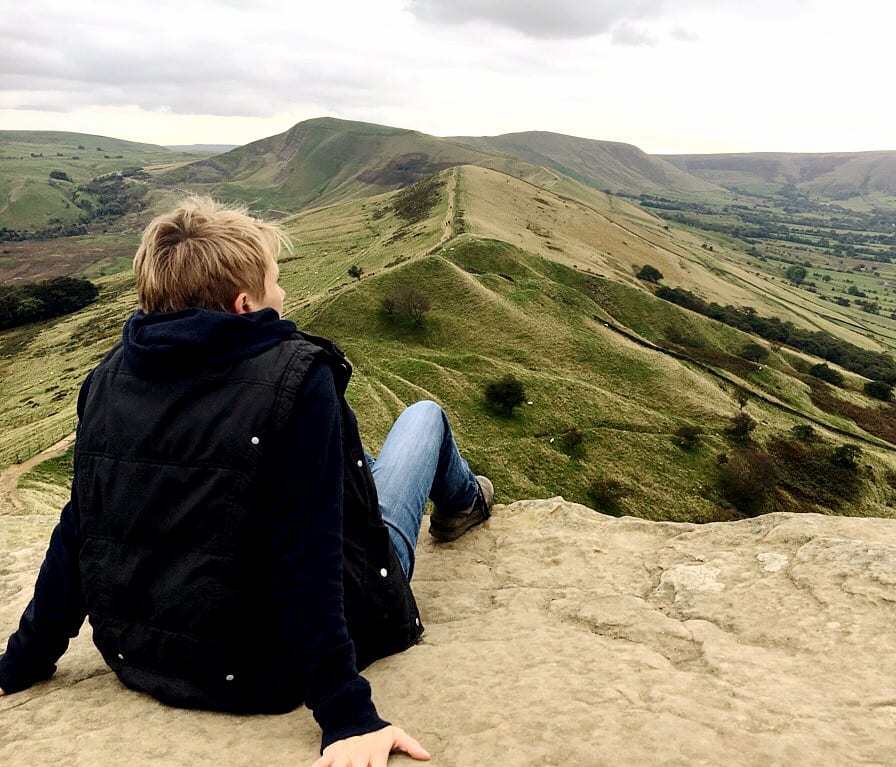Eyam
The beautiful village of Eyam offers a perfect day out for visitors to this part of the Peak District. Set in a stunning location, it has a fascinating and inspiring history, and its narrow lanes are filled with pretty cottages and a wealth of interesting buildings.

The Plague Village

Perhaps best known for being the site of an outbreak of the bubonic plague in the 1600s. It’s a tragic tale, but also an inspiring story of great courage.
In 1665 a local tailor took delivery of a bundle of cloth from London. The cloth turned out to be full of fleas which, tragically, came from rats that were infected with the plague. Within only a few days the tailor’s assistant had died, and others in the household were very sick.
As more residents died over the following weeks, the community rector, Rev William Mompesson, persuaded the villagers to quarantine themselves off from the rest of the world to prevent the spread of disease to neighbouring areas.
This huge act of sacrifice meant that nobody left or entered the village for the next 14 months. During this time at least 270 of the 350 villagers died of the plague, including Rev Mompesson’s wife.

Supplies were brought in to the village and left on boundary stones, with the money to pay for them left on the same stones in exchange. One of the main Boundary Stones is still standing to this day and can be seen on a short walk from the village.
The act of quarantine meant that the plague was contained within the village, and the last plague victim died there in November 1666. The bravery of the villagers in isolating themselves during their worst hour of need meant that hundreds, if not thousands, of other lives were saved in nearby villages.
Reminders and monuments to this period in Eyam’s history can be seen throughout the village. Many of the pretty stone cottages have markers denoting their previous residents during the Plague years, along with their fates. There are also a number of Plague graveyards on the edge of the village, including the poignant Riley Graves, monuments to a family of six children and their father who all died within 8 days.
A display dedicated to the story of the plague can also be found in the beautiful church of St Lawrence, which is located in the centre of the village.
The church dates from the 14th Century, although it is believed to rest on Saxon foundations. There is an 8th Century Anglo-Saxon stone cross in the churchyard, covered in intricate carvings, which is a Grade I listed Scheduled Ancient Monument.

Eyam Museum

Eyam also has a small but interesting museum dedicated to the history of the village, which is well worth a visit.
Eyam Museum tells not just the story of the Plague, but also the tale of the villagers – the miners, spinners, weavers, other skilled craftsmen and women, poets and writers – who all contributed to the rebirth of the village after the Plague.
Click HERE for more information about Eyam Museum.
There is also a small Visitor Information Centre on the village green in the centre of Eyam which contains displays about the history of the village, as well as a pair of ancient stocks used for punishing villagers for minor offences.

Eyam Today
The village of Eyam today is a peaceful, pretty place. The reminders of its tragic past are always there, but they don’t dominate the village. Instead, you’ll find beautiful stone cottages and gracious houses lining the streets, and views out to open countryside in whichever direction you look.
Eyam has a number of wonderful cafes, tea rooms, restaurants and pubs for refreshment, as well as a handful of village shops. For great pub food and comfortable accommodation, look out for the 17th Century pub in the heart of the village, The Miner’s Arms. If you’re looking for delicious restaurant food, try The Coolstone located within the courtyard of the beautiful Eyam Hall.

Eyam Hall
A further point of interest in the village is the beautiful Jacobean Eyam Hall, built in 1672 just after the plague ended. The hall and its lovely walled gardens are open to the public, and the old stable yard houses a number of local craft and food shops.
Eyam Hall is still owned and managed by the Wright family, who have lived there for more than eleven generations.
Click HERE for more information.

Let us show you around!
Click on the link below to find out more about the story of Eyam.
Walking in Eyam
For a lovely walk that starts and ends in Eyam, why not try out our 5.5 mile route that explores the village and also goes out to the lovely village of Stoney Middleton? Click HERE for full details.
This walk is a Figure of 8, with Eyam providing the start, middle and end point. You could do both circles with a break in the middle, or choose to complete either one on its own. The first half of the Figure of 8 takes you out of Eyam, past the Riley Graves and down to the pretty village of Stoney Middleton, taking in fantastic views along the way. The second half takes you through Eyam in the other direction, offering splendid views over the village from Eyam Edge.






